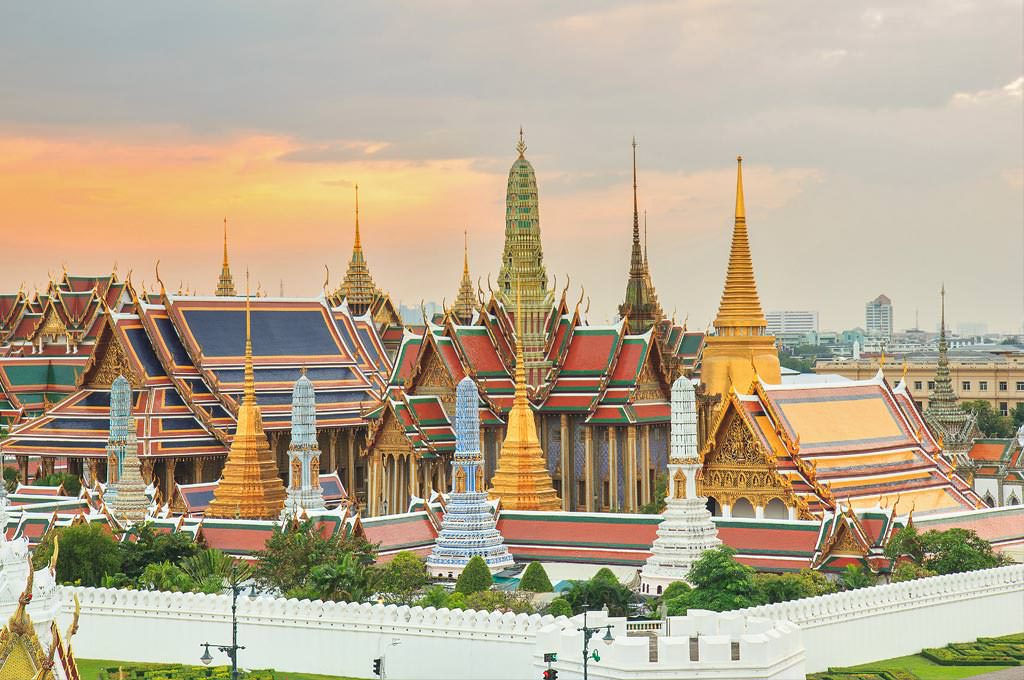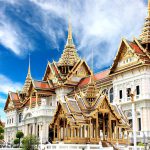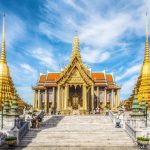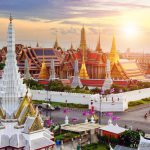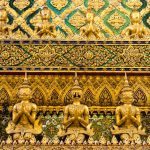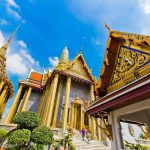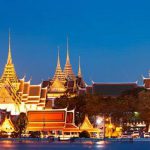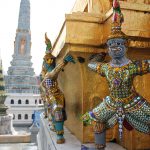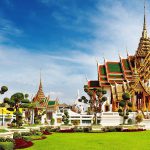Within the palace complex are several impressive buildings including Wat Phra Kaew (Temple of the Emerald Buddha), which contains the small, very famous and greatly revered Emerald Buddha that dates back to the 14th century.
The robes on the Buddha are changed with the seasons by HM The King of Thailand, and forms an important ritual in the Buddhist calendar. Thai Kings stopped living in the palace around the turn of the twentieth century, but the palace complex is still used to mark all kinds of other ceremonial and auspicious happenings.
The palace complex, like the rest of Ratanakosin Island, is laid very similar to the palaces of Ayutthaya, the glorious former capital of Siam which was raided by the Burmese. The Outer Court, near the entrance, used to house government departments in which the King was directly involved, such as civil administration, the army and the treasury. The Temple of the Emerald Buddha is located in one corner of this outer court. The Central Court is where the residence of the King and halls used for conducting state business were located. Only two of the throne halls are open to the public, but you’ll be able to marvel at the exquisite detail on the facades of these impressive structures.
The Inner Court is where the King’s royal consorts and daughters lived. The Inner Court was like a small city entirely populated by women and boys under the age of puberty. Even though no royalty currently reside in the inner court, it is still completely closed off to the public. Despite the proximity of the Grand Palace and Wat Phra Kaew, there’s a distinct contrast in style between the very Thai Temple of the Emerald Buddha and the more European inspired design of the Grand Palace (the roof being the main exception). Other highlights are Boromabiman Hall and Amarinda Hall, the original residence of King Rama I and the Hall of Justice.
A strict dress code applies. The Grand Palace with The Temple of the Emerald Buddha is Thailand’s most sacred site. Visitors must be properly dressed before being allowed entry to the temple. Men must wear long pants and shirts with sleeves (no tank tops. If you’re wearing sandals or flip-flops you must wear socks (in other words, no bare feet.) Women must be similarly modestly dressed. No see-through clothes, bare shoulders, etc. If you show up at the front gate improperly dressed, there is a booth near the entrance that can provide clothes to cover you up properly (a deposit is required). About Wat Phra Kaew

